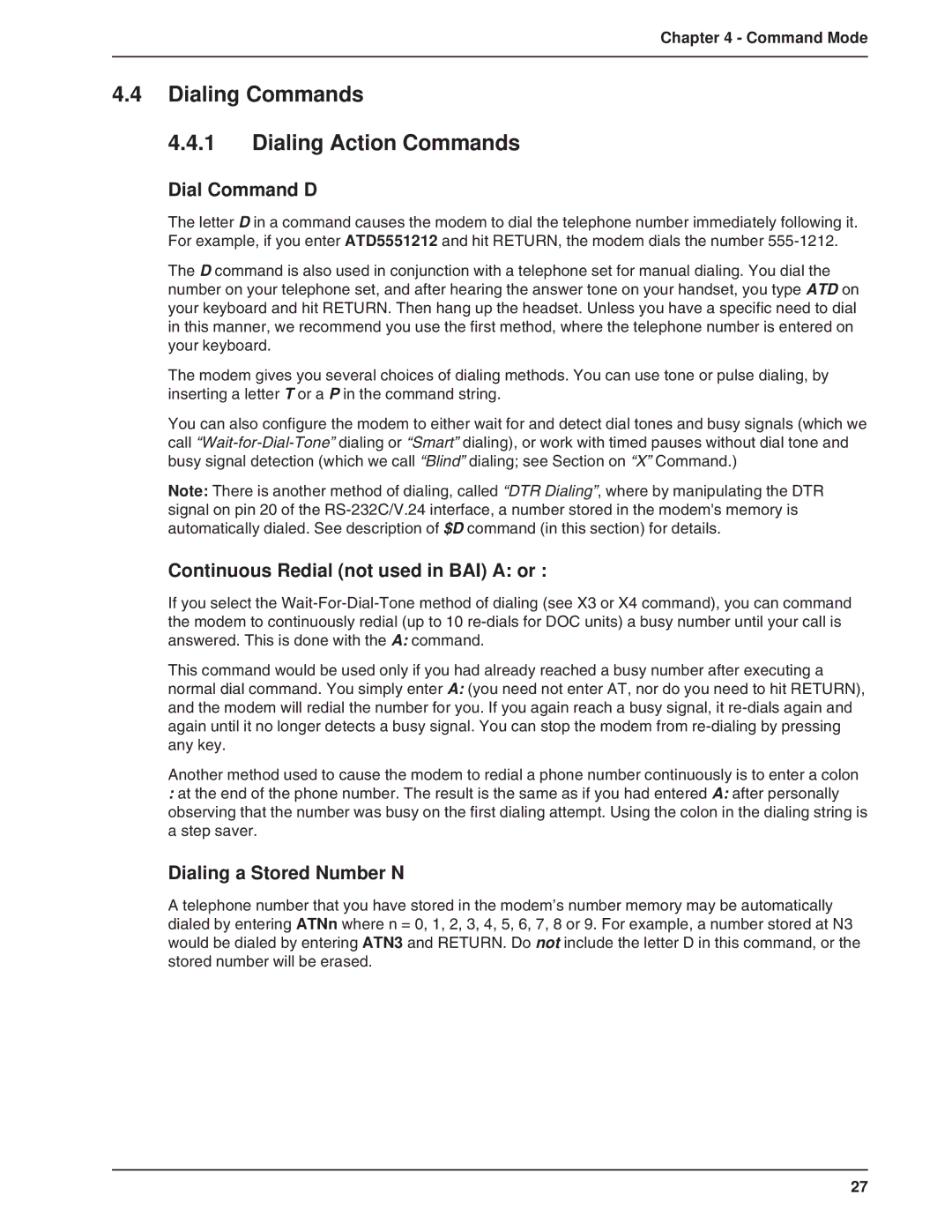
Chapter 4 - Command Mode
4.4Dialing Commands
4.4.1Dialing Action Commands
Dial Command D
The letter D in a command causes the modem to dial the telephone number immediately following it. For example, if you enter ATD5551212 and hit RETURN, the modem dials the number
The D command is also used in conjunction with a telephone set for manual dialing. You dial the number on your telephone set, and after hearing the answer tone on your handset, you type ATD on your keyboard and hit RETURN. Then hang up the headset. Unless you have a specific need to dial in this manner, we recommend you use the first method, where the telephone number is entered on your keyboard.
The modem gives you several choices of dialing methods. You can use tone or pulse dialing, by inserting a letter T or a P in the command string.
You can also configure the modem to either wait for and detect dial tones and busy signals (which we call
Note: There is another method of dialing, called “DTR Dialing”, where by manipulating the DTR signal on pin 20 of the
Continuous Redial (not used in BAI) A: or :
If you select the
This command would be used only if you had already reached a busy number after executing a normal dial command. You simply enter A: (you need not enter AT, nor do you need to hit RETURN), and the modem will redial the number for you. If you again reach a busy signal, it
Another method used to cause the modem to redial a phone number continuously is to enter a colon
:at the end of the phone number. The result is the same as if you had entered A: after personally observing that the number was busy on the first dialing attempt. Using the colon in the dialing string is a step saver.
Dialing a Stored Number N
A telephone number that you have stored in the modem’s number memory may be automatically dialed by entering ATNn where n = 0, 1, 2, 3, 4, 5, 6, 7, 8 or 9. For example, a number stored at N3 would be dialed by entering ATN3 and RETURN. Do not include the letter D in this command, or the stored number will be erased.
27
